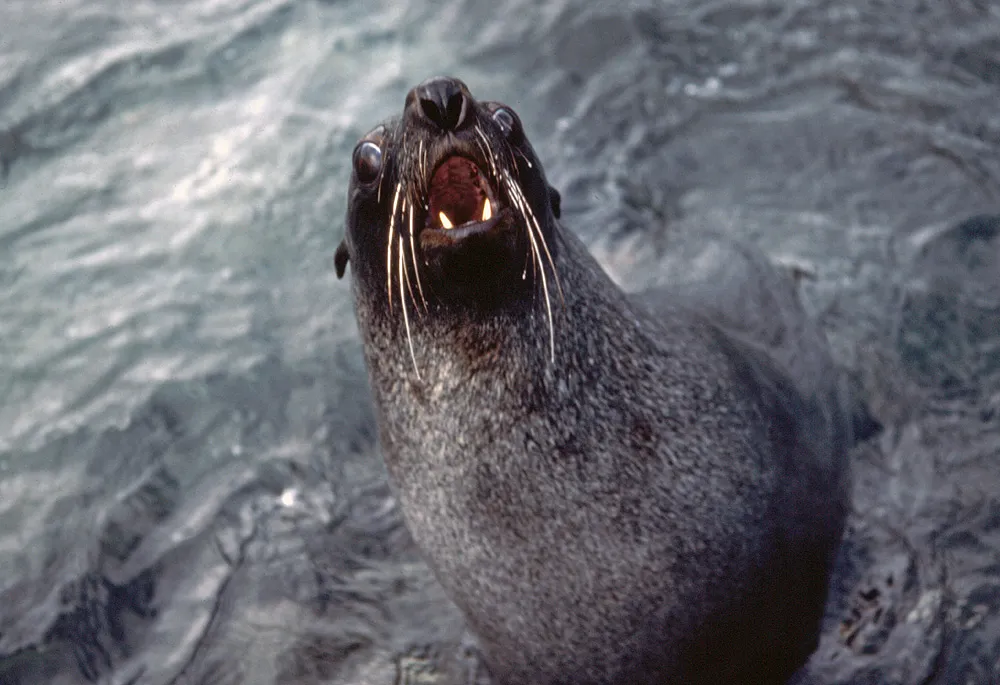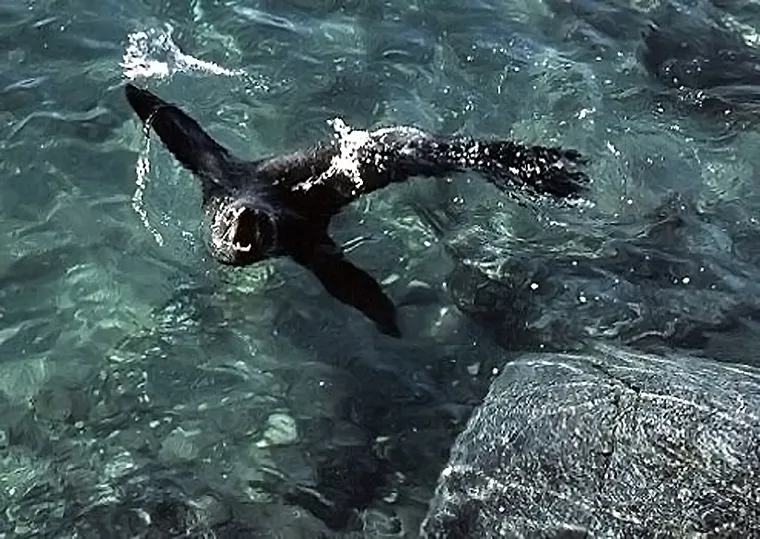Antarctic Fur Seal (Arctocephalus gazella)
Back to gallery Back to fur seal thumbnails Next Previous

Fur seals are very agile partly because of the arrangement of their flippers, and partly because being essentially sub-Antarctic seals, they don't have as much blubber as other types. They have a surprising turn of speed and can venture some distance inland. A first encounter with fur seals, particularly if there are lots of them, is often very disconcerting. They begin by making a plaintive "pouff pouff" sound as you get close and then may make a short charge and lunge.
Once you get used to them however, they are great characters and great fun, like having big bouncy dogs about that want to have fun but aren't really sure of whether you do or if you might be a threat. They still have to be treated with respect though a bite would be especially unpleasant as they have a particularly rich and unpleasant bacterial collection that live in their mouths. "Sealers finger" was a common affliction in the bad old days when a sealer got too close, the resulting infection would mean the loss of the use of that finger (serves 'em right).
These two pictures come from one afternoon when I was walking along the sea-shore where there were young fur seals. This particular seal followed me for about 20 minutes or so as we played a game of peek-a-boo, him in the sea and me behind the rocks. He might look a bit manic, but it was all great fun. I'd hide behind a rock and he's wander up and down making the pouff-pouff sound then I'd jump out from the rock and he'd leap into the sea in mock panic. A couple of powerful strokes of the flippers and he'd turn back round, shoot out of the sea and land virtually at my feet - my turn to leap away in (not always mock) panic. A wonderful experience with a totally wild animal and one of many that I had with fur seals. On another occasion, I played chase on my hands and knees in soft snow with a young seal. Wonderful animals! Can't have enough of them!
Photo; © Paul Ward
